6 Iconic Movies And Shows That Were Outright Ripoffs
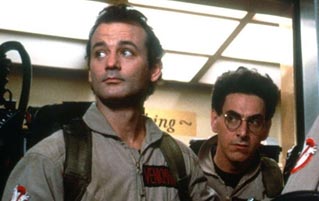
Not every popular movie and TV show is a shameless ripoff. Some actually have shame. As in, the people involved in making them have gone back and said, "OK, that was a little too much." When the evidence of creative thievery is too undeniable, even the thieves themselves have no choice but to concede that ...
Star Wars' Own Website Admits That Lucas "Stole" From A WWII Movie
For Star Wars' classic climax, George Lucas straight up lifted a 1955 British World War II movie called The Dam Busters, moved it to space, and added some sassy robots. He even decided to "steal lines of dialogue," as put by some Star Wars-bashing website called ... uh, StarWars.com.
The most incriminating part of that montage is at 1:08, when we hear this exchange from Star Wars:
"How many guns do you think, Gold Five?" "I'd say about 20 guns, some on the surface, some in the towers."
Compare that to The Dam Busters:
"How many guns do you think, Trevor?" "I'd say there's about ten guns. Some in the field, some in the tower."
The Dam Busters is about a British squadron tasked with lining up an "impossible shot" to destroy three dams, which you might recognize as the same premise as the Death Star trench run. Lucas went so far as to hire the guy in charge of Busters' special effects photography, Gilbert Taylor, as cinematographer to basically remake some of the old movie's shots. Dam Busters' makeup artist, Stuart Freeborn, also went on to work in Star Wars and create Yoda, Chewbacca, the Ewoks, and other unsightly creatures.
According to Star Wars producer Gary Kurtz, he and Lucas taped The Dam Busters from TV along with many other war movies to "use as guidelines." It's the cinematic equivalent of Frankensteining your homework from Wikipedia paragraphs. At least now we know what's up with all those random British accents.
Related: 17 Famous Movies That Ripped Off From Lesser-Known Films
Mission: Impossible 2 Is An Unauthorized Remake Of An Alfred Hitchcock Film
The more recent Mission: Impossible movies are essentially Tom Cruise going through his personal checklist of elaborate suicide attempts, but once upon a time, they were supposed to be based on the classic TV show of the same name. That changed quickly with Mission: Impossible 2, which qualifies as a remake of Notorious, a 1946 Hitchcock thriller. Director John Woo has reportedly admitted this, and screenwriter Robert Towne has even helped point out some similarities:

But this is more than "an echo." Both movies start with the protagonists at parties, trying to convince women they've never met to spy on someone for them. After some hazardous driving scenes that (naturally) end with the women in bed, the protagonists learn that the ladies have had past relationships with the men they're supposed to spy on, but they're still able to convince them while on their hotel balconies.


The villains are of course blinded by their attraction to the girls, and this leads to scenes taking place on racetracks, during which the girls are expected to obtain something from their marks.


Eventually the women get some nasty stuff in their systems before the agents swoop in to save the day (and get some action). If there's any takeaway from all this, it's that writing a spy thriller that isn't derivative of a Hitchcock movie is the true impossible mission.
Related: 5 Movies That Ripped Off Films You'd Never Compare Them To
According To Its Own Producer, Bates Motel "Ripped Off Twin Peaks"
Bates Motel follows the adventures of the psycho from the movie Psycho, or at least, it was supposed to. According to the show's executive producer, Carlton Cuse, they "pretty much ripped off Twin Peaks," everyone's favorite '90s soap opera about murderous demons from other dimensions. That's a serious accusation, Mr. Cuse, so let's see if it's true.
As noted by Gaby Dunn at Thought Catalog, both shows are set in quiet Pacific Northwest towns that seem to exist solely for the purpose of people being murdered in them. Both feature a hotel or motel operated by an unconventional parent-child pair (the Hornes and Bates). Norman Bates, the nice but offbeat protagonist who ends up killing people, also has a lot in common with Agent Cooper, though Coop at least has an excuse, having been possessed by a supernatural roadie at the time.
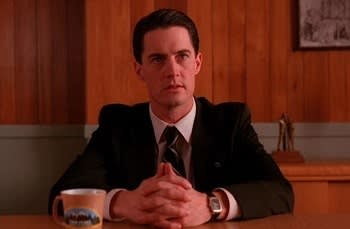
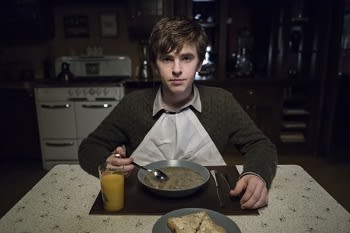
As time goes on, the deaths of popular blondes with daddy issues have significant impacts on the secret drug operations running in these picturesque little towns. There are also storylines about incest, sex crimes, and the oddly specific plot about the hotel/motel-owning parent attempting to prevent local developments from happening by faking concern about endangered animals.


Since Twin Peaks originally had only 30 episodes, Cuse set out to "make the 70 that are missing." Ironically, Bates Motel ended right before Twin Peaks returned for an even weirder third season, which seemingly copied one element from its own imitation: inexplicable musician cameos.
Ghostbusters Had To Pay The Creators Of A 1970s Show Called ... The Ghost Busters
When Ghostbusters came out in 1984, no one had seen anything like it. Unless they watched TV. Columbia Pictures had to pay the makers of a 1975 sitcom called The Ghost Busters to use the title, but the similarities went beyond the name. Both the movie and the show are comedies about some regular dudes who run a ghost extermination business out of a rundown building.


Both teams use a device that shoots trippy lights at the ghosts to make them disappear.
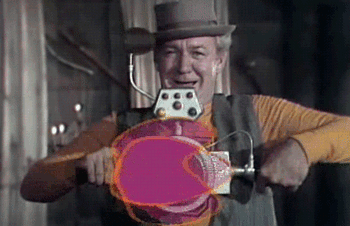
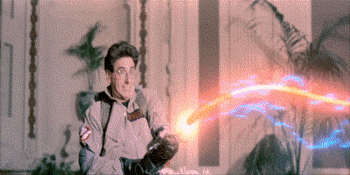
Both also have their own silly theme song about being ghost busters (to be fair, people in their position are limited in what they can sing about).
Both drive an old-fashioned car. Both have a round logo depicting a ghost who seems shocked to be there. You get the idea. Even so, The Ghost Busters' creators at Filmation were happy to let Columbia use the name in exchange for a one-time $500,000 payment and a 1% cut of the profits ... which never materialized, due to the magic of Hollywood accounting.
To make matters worse, when Filmation tried to revive their series in animated form, Columbia put out their own animated show called The Real Ghostbusters (as opposed to the fake ones who ... somehow managed to do it first). And because the movie overshadowed the show, people mistakenly thought the gorilla character was a racist insult to Ernie Hudson. Who ya gonna call? Hopefully some better lawyers, Filmation, because damn.
Related: 7 Classic Movies That Are Shameless Ripoffs
Star Trek Recycled Tons Of Stuff From The Outer Limits
As groundbreaking as Star Trek was, some of that ground had already been broken by another popular sci-fi series of that era. For budgetary reasons, creator Gene Roddenberry asked the crew to get creative with whatever could be "doubled over, stolen or borrowed." Their solution: taking a crapload of creatures, props, makeup effects, and everything but the name from The Outer Limits. The iconic Horta from "The Devil In The Dark"? Already the iconic "Mikey" from the Outer Limits episode "The Probe."


Spock's ears? Remade from some ears created for an even uglier character in the Outer Limits episode "The Sixth Finger."


The bird creature seen in the Star Trek episodes "The Menagerie" and "The Cage" also bears a striking resemblance to the Megasoid from the "Duplicate Man" episode of Outer Limits, mainly because it's wearing the same damn mask.


Over the years, they also reused several visual effects, storylines, and oh yeah, actors who appeared in Outer Limits first. Like William Shatner and Leonard Nimoy. Writers and crew members were poached too. Apparently, none of this factored into the decision to retitle the show Star Trek: The Original Series in reruns.
George Romero Openly Admitted That Night Of The Living Dead Ripped Off I Am Legend
Night Of The Living Dead had a fairly simple formula: Take Richard Matheson's apocalyptic novel I Am Legend, tell the story from the beginning, and change the vampires into something else so nobody would notice. That's not an outside accusation of thievery, that's how director George A. Romero himself described the process.
I Am Legend starts when the world has already been completely screwed by a global pandemic that turned everyone into dumber Draculas. Romero thought it would be cool to "start at the beginning and tweak it up a little bit." Never mind all that stuff about crucifixes and deadly garlic allergies, Romero wanted to know "What if the dead stop staying dead?" -- and also presumably "Would that be enough to not get me sued?" He wanted "something that was forever," not unlike the series he spawned, which absolutely refuses to die.
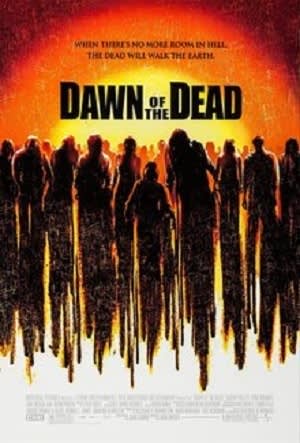
For his part, Matheson thought Night Of The Living Dead was "kind of cornball," but he didn't hold a grudge against Romero, especially because when they met, Romero insisted that he didn't profit off the film (due to a copyright mix-up). This would perhaps make Romero the most unsuccessful successful thief in history. He was reportedly forgiven by Matheson, who may have felt differently if he'd taken into account the 50,000 sequels and reboots that Romero undoubtedly profited from later.
Check out Yingandyan.com for all the conjoined twins jokes your little heart could possibly ever desire.
For more, check out 4 Famous Musicians (Who Stole Their Biggest Hits) - The Spit Take:
Also, we'd love to know more about you and your interesting lives, dear readers. If you spend your days doing cool stuff, drop us a line at iDoCoolStuff at Cracked dot com, and maybe we can share your story with the entire internet.
Follow us on Facebook why don't ya?